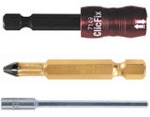How to Make Hand Tools
Casting, Forging, Machining, and Sintering
In casting you get the metal hot and you pour it into a mold. With forging you take a piece of metal and get it hot and then you hammer it into shape. Machining is a whittling process by which you take a block of material and cut it down into the desired shape. Sintering is powdered metal. It takes various powders together and presses them in a mold. Then it heats up the molded powders to a temperature just below the melting point. This bonds the grains together and gives you a finished shape. Sintering is it only way to make certain parts such as tungsten carbide shapes.
You can hear a lot of arguments about which gives you the best results. The truth is that each technique is most suitable depending on a wide range of requirements and circumstances.
Traditionally forging was considered to give a better part than casting. Modern casting techniques have raised the quality of cast parts to where it can be somewhere around 95% of the strength and overall quality of a forged part at considerably less cost.
In all these techniques one of the major faults is the creation of voids or holes or soft spots inside the material.
Forging eliminates soft spots through the use of sheer physical force in the form of hammering. Casting eliminates soft spots and voids through modern mixing techniques and intense vibration during the pouring and settling. Machining is often done on forged billets to eliminate the possibility of voids or holes. Sintered parts are often subject to HIPing. Hot Isostatic Pressing subjects the hot, soft parts to intense pressure which squeezes them and thus eliminates voids and porosities.
Buy Great Hand tools at Great Prices
800 346-8274
Tags: hand tools, Quality
Leave a Reply





